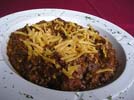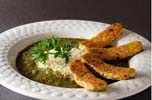Vegetarian Resources
How to Get Enough Protein
The most common question a vegetarian coming to the program asks is: how on earth am I going to get enough protein using non-meat sources? First thing you need to do is figure out how much protein to eat. To figure that out click here.
 Great, so now you know how much protein you need at each meal, but what are different vegetarian protein sources? Well they can include things like beans, eggs, cheese, tofu or other soy products, protein powders and nuts. Some people enjoy veggie burgers or other meat replacements, too. Do pay attention to the amount of soy you have in a week. It is estrogenic and if you have too much, it can affect your hormones in a pretty major way. Also if you have a lot of soy it can affect your thyroid function. Read this article to learn more. If you are on Steps 1-5 it’s ok to have foods with sugars in them still, so don’t fret too much on coverts. Great, so now you know how much protein you need at each meal, but what are different vegetarian protein sources? Well they can include things like beans, eggs, cheese, tofu or other soy products, protein powders and nuts. Some people enjoy veggie burgers or other meat replacements, too. Do pay attention to the amount of soy you have in a week. It is estrogenic and if you have too much, it can affect your hormones in a pretty major way. Also if you have a lot of soy it can affect your thyroid function. Read this article to learn more. If you are on Steps 1-5 it’s ok to have foods with sugars in them still, so don’t fret too much on coverts.
 |
Many of us in the program have found that it works best for our body to pull from a variety of protein sources for each meal. We call this stacking. Here are some examples of vegetarian proteins that use stacking, just don’t forget to add a brown and veggie!:
- Black bean soup with a sliced hard boiled egg on top
- Cashew and bean chili with shredded cheese
- Grilled tofu with a side of greek yogurt
- Egg and cheese omelet
- Quesadillas with cheese and soy chicken strips
- Grilled tempeh and cheese Reuban sandwhich
|
 |
Beans: Protein or Brown?
Confusion arises over the topic of beans or other legumes. After all, they have a good amount of both protein and complex carbohydrate. Experience has taught us that beans can be counted as either, but not both. Confused? Basically if you really want to heal it works best to not ask foods to multi-task, pick to use your beans as either protein or carb and then add in additional foods to make sure you get a well-rounded meal.
Vegetarian Recipes
Tips for Cooking Tofu
 Tofu is a wonderful soy protein product for use in cooking because it picks up flavors easily. That makes it adaptable to many different recipes or cuisine types. Tofu comes in a variety of types based on density, or the amount of water left in. Silken tofu is the least dense, it’s great for use in creamy soups or smoothies. Firm and Extra firm tofu has less water and keeps its shape better in recipes. Tofu is a wonderful soy protein product for use in cooking because it picks up flavors easily. That makes it adaptable to many different recipes or cuisine types. Tofu comes in a variety of types based on density, or the amount of water left in. Silken tofu is the least dense, it’s great for use in creamy soups or smoothies. Firm and Extra firm tofu has less water and keeps its shape better in recipes.
Here are some additional tofu tips:
- Freezing firm and extra tofu changes the texture to a more crumbly shape. Once defrosted, this can be used as a substitute for ground beef in recipes. Best to use a type not packed in water when freezing.
- Freeze a block of extra firm tofu (not packed in water), defrost and then use the palm of your hands to press out any additional water. Slice and it’s got a great texture for grilling!
- You can press some water out of tofu without freezing. Place a block of drained tofu on the counter between layers of paper towels. Place a cutting board on top with heavy cans to slowly press out water.
Tips for Cooking Tempeh
 Tempeh is a fermented soy product, and sometimes easier for people to handle if they are sensitive to the natural hormones in soy products. Unlike tofu, tempeh has a strong flavor on its own. Some people love this flavor, others to not. Try a few varieties to see which you like. Here are some tempeh tips:
Tempeh is a fermented soy product, and sometimes easier for people to handle if they are sensitive to the natural hormones in soy products. Unlike tofu, tempeh has a strong flavor on its own. Some people love this flavor, others to not. Try a few varieties to see which you like. Here are some tempeh tips:
- Tempehs firm texture makes it idea for grilling. Just marinate and toss it on!
- Steaming tempeh first can make it less pungent, it also helps it to absorb marinades better.
Transitioning to Vegetarian
Here are some community members’ stories on how they transitioned to vegetarian after finding Radiant Recovery.
“I'm still a work in progress (smile) currently back working on step 3 after detouring for awhile. (To be fair, I detoured several years ago as a meat eater, too) I'm curious to see if it is possible to get back to steady without going back to eating meat.
That being said, I transitioned after step 7. Over the course of a year or more I stopped eating, one at a time, red meat, pork and chicken until the only meat I was eating was ground turkey and fish. Then I combined the turkey with beans and phased it out. I kept eating fish when eating out and sometimes at home. I did not take out dairy or eggs. I haven't had fish in awhile but will still eat it on occasion.
The key for me, I'm finding, is making sure I know how much protein I'm eating at each meal, stacking both protein sources and browns in each meal and eating plenty of vegetables. I can't do just protein + brown for meal like I could when I was eating meat.
Speaking strictly from my own experience, if one is eating meat, it works well to do the steps making conscious meat choices and getting steady on 7 before making the transition. Now that I've been eating vegetarian for some time it remains to be seen if I can get steady again while remaining veg. It definitely takes more thought and willingness to pay attention to my journal.” --Janice
“I transitioned toward vegetarianism after step 7. I still eat occasional
fish and once in a great while, meat, but I definitely dramatically lessened
the amount. I also don't eat dairy or soy at the moment.
What worked for me was doing it gradually and using my journal, especially
watching out for ‘cranky.’ At first I could only last a couple days without
meat before getting irritable. I also started combining meat with other
vegetable proteins rather than eating it as the sole source. I still eat
proteins (and browns for that matter) in combination. That seems to work
really well for holding me. Over time I was able to go longer periods without
meat and stay stable. It took me about a year, though. Just as an aside,
I notice that I need a lot of protein at breakfast—that rice protein powder
takes more than the amount it says on the container to add up in my body.” –JoEllen
“I had been on Step 7 for 5 years, and it took me two more years to fully transition to vegetarian. I tried at first completely switching over. Well it was as if I tried to do all 7 steps in a day (yes I tried that too!). My body rebelled; I was cranky, depressed and emotional. It felt like I wasn’t doing the food at all anymore! After that I decided to just nudge my body along. First I started by giving up beef, pork and lamb. They were my least favorite meats anyways, so it felt safe. Later on I started to reduce my use of poultry. All the while I was slowly adding in more vegetarian meals. Finally, I transitioned off fish and seafood—that was the hardest, they were my favorites.
I still eat eggs and dairy products, with no plans to go vegan. My body is pretty happy at this point. I’ve figured out that stacking my proteins, and often my browns works best, and veggies are way more important these days then before. When I start to feel cranky I know I need to look at my browns and veggies again. Or if my brain starts spinning and keeping me up at night then I know I’m not getting enough protein and I need to look at that again. My journal really has been my best friend through all this!” --Heather
|
